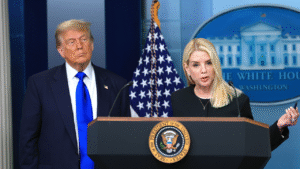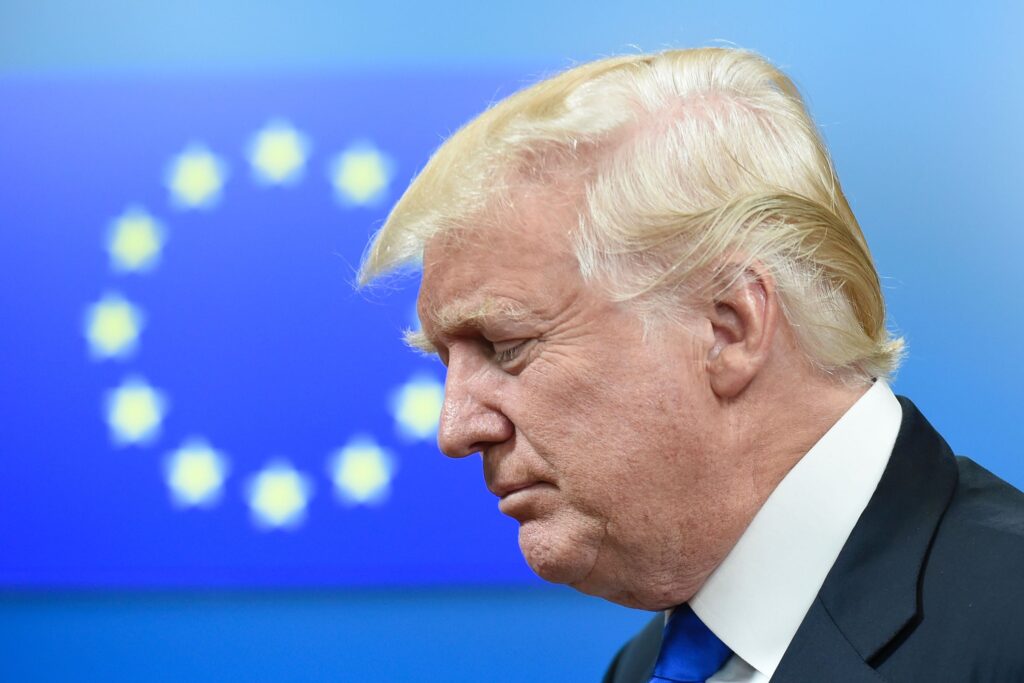The European Union is holding firm to its goal of striking a trade deal with President Donald Trump by midweek, even after the White House unexpectedly delayed its tariff deadline once more until August, raising uncertainty and frustration in Brussels.
The EU is still aiming for a July 9 agreement in principle, which would include a 10 percent baseline tariff, European Commission spokesperson Olof Gill told Newsweek. Trump announced Sunday that the return of sweeping U.S. tariffs — previously slated for this week — would now be pushed back to Aug. 1, leaving EU officials to navigate what they described as yet another “sorry saga” in negotiations.
Last week, while all eyes in Washington were on the Capitol to see if Trump’s sweeping tax and spending bill would pass the House, EU Trade Commissioner Maroš Šefčovič traveled to the city to lead the bloc’s delegation in meetings with U.S. Trade Representative Jamieson Greer and Commerce Secretary Howard Lutnick.
Days later, speaking with CNN’s State of the Union host Dana Bash, Treasury Secretary Scott Bessent said Trump would be “sending letters to some of our trading partners saying that if you don’t move things along, then on August 1 you will boomerang back to your April 2 tariff level.”
Preparing for Both Scenarios
EU officials confirmed to Newsweek they had received a draft U.S. proposal last week, though one diplomat described it as offering “nothing very concrete.” The idea, another official said, is to agree on a deliberately short framework now, leaving more detailed negotiations over specific sectors — such as cars, aircraft, and digital services — for later.
“This would not be a detailed, comprehensive trade deal, but rather a political understanding laying the groundwork for more concrete arrangements,” one senior EU diplomat said.
The EU, which is the U.S.’s largest trading partner when goods and services are combined, has been a frequent target of Trump’s ire. He has regularly cited a goods trade deficit of about $236 billion in 2024 while pushing Europe to buy more American cars, energy, and defense equipment, and to ease up on its digital regulations — demands EU officials have rejected as incompatible with EU law.
The European Commission has signaled it could live with a baseline 10 percent U.S. tariff on EU imports if offset by relief in key sectors. But divisions remain within the bloc, with Germany and Italy favoring quick acceptance of such a deal and France and Ireland urging a harder line.
Diplomats in Brussels expect the final text to resemble the outline deal Britain signed with the U.S. earlier this year — a few pages long, largely symbolic, leaving the most contentious issues for later. “The expectation that we have is that by the 9th, something will be there — but it might be very little,” Brando Benifei, a member of the European Parliament and chair of its delegation with the U.S., told The New York Times.
Officials emphasized that while Brussels is pushing hard to secure the best possible outcome for its member states, the bloc remains fully prepared for the worst-case scenario if negotiations collapse. Retaliatory measures targeting $22.6 billion (€21 billion) in U.S. goods are already approved, and another package covering $102.2 billion (€95 billion) remains ready to activate if necessary.
“We are prepared for both outcomes — but our priority is to secure the best deal we can before the deadline,” one official said.
Trump has threatened to impose 50 percent tariffs if no deal is reached, pushing both sides to pursue a “political understanding” — a broad framework rather than a comprehensive accord, similar to agreements the U.S. has already reached with the U.K. and China.
Principles Now, Details Later
The emerging consensus in Brussels is that any agreement reached this week will be a political framework — essentially an agreement in principle — rather than a fully detailed trade pact. “It is not excluded that some sectors could be addressed while others are not,” one EU official said, noting that more specific arrangements could follow later.
European officials are also considering pledges to buy more U.S. liquefied natural gas, invest in U.S. technology and defense sectors, and work jointly against unfair Chinese trade practices, diplomats said — offering Trump symbolic wins without overhauling EU rules.
Gill, the spokesperson for the EU trade commissioner, stressed that the EU’s approach had been meticulously planned months before the U.S. election.
“We’ve been in full prep mode even before the election,” he told reporters during a briefing from Berlaymont, the curvaceous, glass campus in central Brussels that houses the European Commission. “Nothing you are seeing in terms of our approach to trade is haphazard. This has been war-gamed long before the election took place. And I think you can see that that’s really playing out in real time.”
Šefčovič confirmed that the EU had received “the first draft of the (U.S.) proposals for the eventual agreement in principle.” The outcome of his Washington visit is expected to be discussed by EU ambassadors and the EU Council’s Trade Policy Committee later this week.
Still, officials warned that talks remain fragile and could unravel quickly, as Trump demonstrated by abruptly cutting off similar negotiations with Canada last week over a digital services tax dispute.
Read the full article here

















